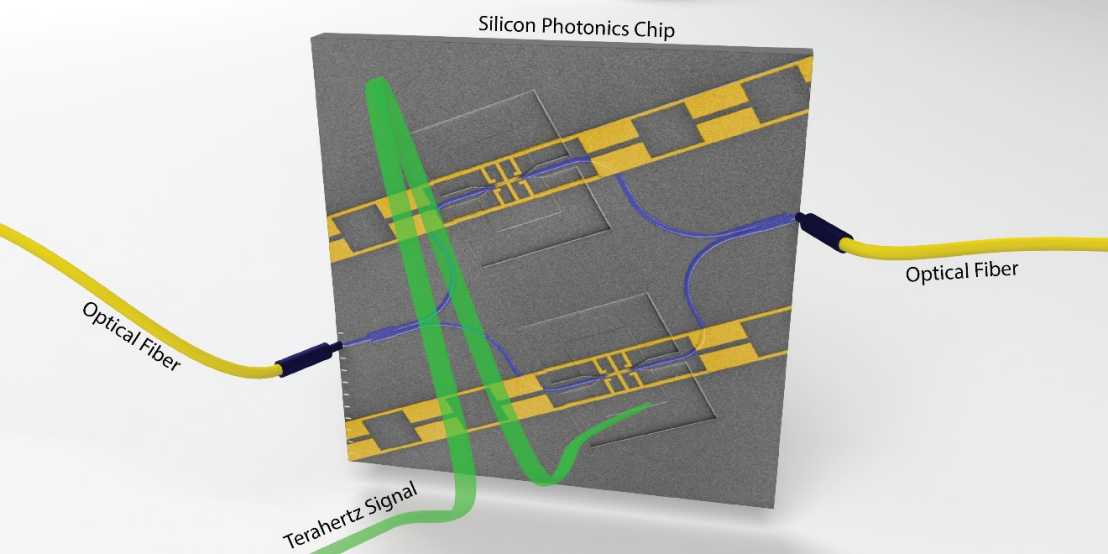Terahertz Waves Go Nano
In a joint collaboration Juerg Leuthold (D-ITET) and Jerome Faist (D-PHYS), together with Larry Dalton from the University of Washington, Department of Chemistry, Seattle, USA, show a terahertz detector on a silicon chip in Nature Communications. The two lead authors of the paper, Yannick Salamin (D-ITET) and Ileana-Cristina Benea-Chelmus (D-PHYS) see in this demonstration an enormous potential for future ultrasensitive broadband spectroscopy and telecommunication.

Terahertz waves – that oscillate at frequencies between the microwave and the infrared – hold great promise for future gas detection, security and telecommunication applications.
Until recently, the generation and detection of terahertz waves remained a challenge, which limited a wide spread of terahertz applications. Broadband terahertz detectors are especially relevant because of their ability to detect the entire terahertz spectrum in one single shot. Existing techniques at room temperature most often rely on bulky free space optical systems that are power hungry.
The demonstrated detector has a footprint of less than 0.05mm2 and is many orders of magnitude more efficient than state-of-the-art bulk detectors. Moreover, the researchers tackle also the power requirements in their realization.
This result holds promise for future compact and low-power hand-held terahertz systems, in which all components – lasers, nonlinear elements, photodetectors and control electronics – are co-integrated. Such a system would revolutionize the terahertz field and enable a plethora of new applications. The researchers already imagine small biological or chemical sensors integrated on smartphones, portable high-resolution medical imaging system just to name a few.
Publication: external page Nature Communications